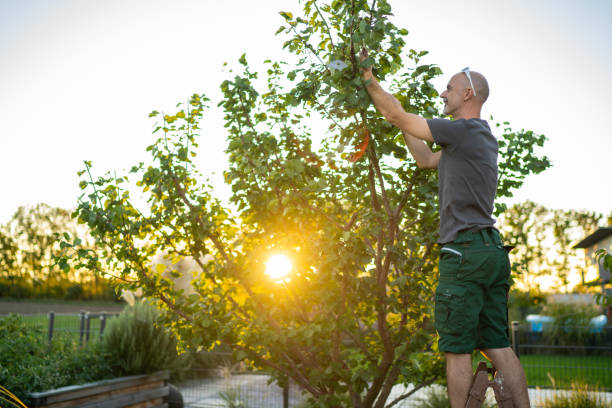Defensible space is the cleared area around your home or property that acts as a buffer against wildfires. Properly maintained defensible space slows the spread of fire, protects structures, and gives firefighters a better chance to respond effectively.
However, over time, these areas can deteriorate, reducing their effectiveness and increasing fire risk.
Recognizing when your defensible space needs attention is crucial for safety and peace of mind. By identifying early warning signs and taking corrective action, homeowners can maintain a fire-resistant property and reduce the likelihood of catastrophic damage.
Regular inspections and proactive maintenance are essential for keeping these areas effective year-round.
Overgrown Vegetation
Dense brush, tall grasses, and unchecked tree growth can compromise your defensible space by providing fuel for wildfires. Overgrowth limits the protective function of cleared areas and increases fire intensity.
- Trim trees and shrubs regularly to maintain proper spacing.
- Remove dead or dying vegetation promptly.
- Keep grasses mowed and under 6 inches in height.
Overgrown areas make it easier for fire to spread from ground level to tree canopies. Regular trimming and maintenance restore the effectiveness of your defensible space and protect your home.
Accumulation of Dead Material
Dead leaves, branches, and fallen debris can quickly accumulate, especially after storms or seasonal changes. This material increases flammability and reduces the safety of your defensible space.
- Rake and remove dead leaves and pine needles from yards and pathways.
- Clear fallen branches and twigs around trees and structures.
- Dispose of debris safely, avoiding pile-ups near the home.
Accumulated dead material acts as kindling during a wildfire. Removing it ensures that your defensible space continues to serve as an effective fire buffer.
Poorly Maintained Tree Canopies
Tree canopies that are too close together or overhanging structures create “ladder fuels” that allow fire to climb from the ground into the treetops. This can bypass your defensible space and threaten your home directly.
- Trim low-hanging branches to create at least 10 feet of clearance from the ground.
- Thin crowded tree canopies to allow sunlight and airflow.
- Remove dead or diseased trees that could fall or ignite easily.
Properly managed canopies reduce fire intensity and prevent flames from spreading to structures. Maintaining adequate spacing is a key step in wildfire prevention.
Cluttered or Obstructed Zones
Defensible space should be clear of unnecessary items, tools, or combustible materials. Clutter reduces the effectiveness of the buffer zone and can create hazards during a wildfire.
- Store firewood, propane tanks, and flammable materials away from the home.
- Remove unnecessary items such as furniture, tires, or unused equipment.
- Keep driveways and pathways free of obstructions for emergency access.
Cluttered zones hinder fire response and increase the risk of fire spreading to structures. Keeping your defensible space organized ensures maximum protection and accessibility.
Signs of Erosion or Soil Degradation
Soil erosion or poor vegetation coverage can weaken your defensible space’s ability to prevent fire spread. Bare soil can also increase debris accumulation and reduce overall landscape stability.
- Plant fire-resistant ground cover to stabilize soil.
- Fill eroded areas with mulch or gravel where appropriate.
- Inspect slopes and drainage areas for signs of washout or damage.
Healthy, stable soil supports vegetation that slows fire spread and prevents debris accumulation. Maintaining soil integrity strengthens your defensible space and adds long-term protection.
Maintain a Safe and Effective Defensible Space
Your defensible space is a critical line of defense against wildfires, and recognizing the signs that it needs attention ensures continued safety. Overgrown vegetation, accumulated debris, poor tree canopies, cluttered zones, and soil issues all indicate areas that require maintenance. By addressing these concerns proactively, homeowners can protect their property, support firefighter efforts, and reduce fire risk. A well-maintained defensible space is not only safer—it provides peace of mind during wildfire season and safeguards your home for years to come.

